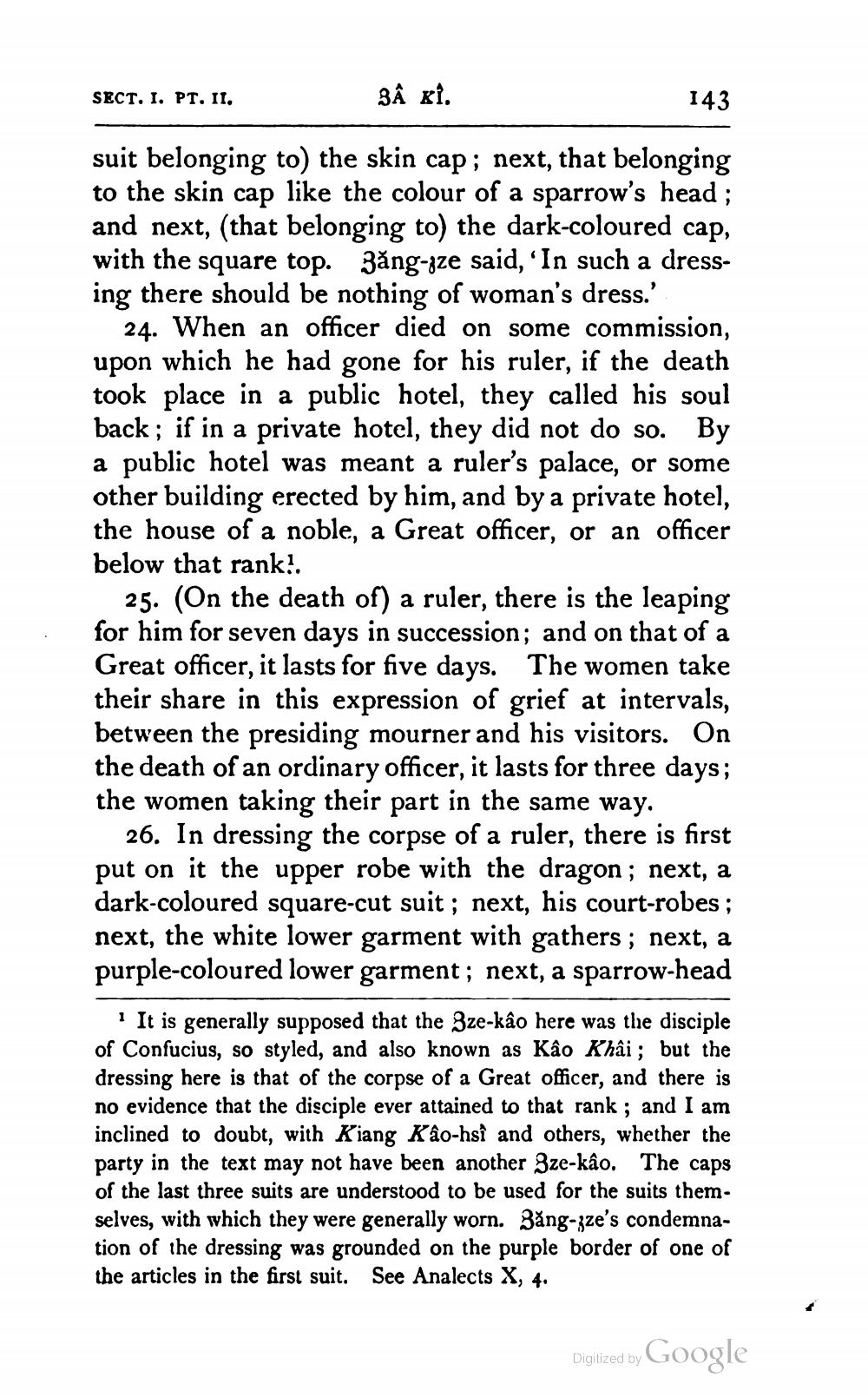________________
SECT. I. PT. II.
3Â ki.
143
suit belonging to the skin cap; next, that belonging to the skin cap like the colour of a sparrow's head; and next, (that belonging to the dark-coloured cap, with the square top. 3ăng-gze said, 'In such a dressing there should be nothing of woman's dress.'
24. When an officer died on some commission, upon which he had gone for his ruler, if the death took place in a public hotel, they called his soul back; if in a private hotel, they did not do so. By a public hotel was meant a ruler's palace, or some other building erected by him, and by a private hotel, the house of a noble, a Great officer, or an officer below that rank..
25. (On the death of) a ruler, there is the leaping for him for seven days in succession; and on that of a Great officer, it lasts for five days. The women take their share in this expression of grief at intervals, between the presiding mourner and his visitors. On the death of an ordinary officer, it lasts for three days; the women taking their part in the same way.
26. In dressing the corpse of a ruler, there is first put on it the upper robe with the dragon; next, a dark-coloured square-cut suit; next, his court-robes; next, the white lower garment with gathers ; next, a purple-coloured lower garment; next, a sparrow-head
It is generally supposed that the Zze-kâo here was the disciple of Confucius, so styled, and also known as Kâo Khâi; but the dressing here is that of the corpse of a Great officer, and there is no evidence that the disciple ever attained to that rank; and I am inclined to doubt, with Kiang Kâo-hsî and others, whether the party in the text may not have been another Zze-kâo. The caps of the last three suits are understood to be used for the suits them. selves, with which they were generally worn. Băng-zze's condemnation of the dressing was grounded on the purple border of one of the articles in the first suit. See Analects X, 4.
Digitized by Google




